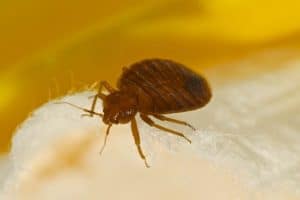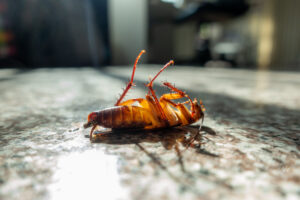Do Foggers for Bugs Work?
When you’ve got an insect problem you’ll do almost anything to rid of them. I’m always looking for cost-effective ways to solve a problem. With such a saturated insect killer market how do you know what option is best for your bug issue? If you’re anything like me, whichever option requires the least amount of effort but yields effective results is what I look for. For this reason foggers for bugs appealed to me. However, I’m not quite sure bug foggers work. Let me tell you what I found out.
So, foggers for bugs- do they work? Insect foggers have been around for a while. What you may not know is that they aren’t very good at controlling many types of pests. If these products were effective, then why would companies continue to sell bug bombs and other aerosol-based insecticides? The only reason would be because people keep buying them thinking they’re going to get rid of bugs, but the truth is that foggers are only useful in a few special cases.
I know what you’re thinking. “If foggers only work well for certain scenarios why are they so popular?” They are popular because people don’t usually know any better. People just want to solve their bug problem as quickly and cheaply as they can. At first glance, bug foggers seem to fit the bill. So now that you know that there are only a few cases when foggers for bugs work, let us dive a little deeper.
When Do Foggers Work For Bugs?
There are three primary scenarios in which bug foggers can come in handy:
1) When there is an isolated population of bugs
2) When it’s too dangerous or impractical to spray chemicals
3) When you want to make use of the insecticide residue on surfaces.

Let’s take a closer look at each scenario.
When There Is an Isolated Population Of Bugs
Most homes only have one or two bug infestations. These are usually dealt with by using common household products or calling in an exterminator. The one exception is when you know that there is a specific area where bugs are feeding on something other than your home furnishings (i.e., they are not nesting).
For example, carpenter ants or earwigs can enter your home through small cracks around windowsills even if there aren’t any visible nests inside the walls of your house. These areas should be treated with a fogger so that it will kill off all of the bugs before they have the chance to get into your walls.
Fleas
Bug foggers can also be used to get rid of fleas in the home. I’ve had to do this myself, and it worked very well. The reason that these kinds of insect foggers work so well for this problem is that they create a mist that settles on all surfaces, such as furniture and bedding (wherever your pet likes to rest).
Insects like fleas are attracted to heat and carbon dioxide (so pets produce both). This means that they will be drawn towards warm bodies and the exhaled air from mammals’ lungs.
However, because of their shape and weight, they don’t easily move across flat surfaces. This means that insects like fleas tend to stay in certain areas, making them easy to target with insect foggers.
Insecticide foggers also leave a residue that is effective against new infestations of fleas for up to 4 weeks.
Bedbugs
This works because bedbugs are attracted to warmth, exhaled air (breathing), and other small creatures like themselves. When the room filled with fogger product I believe it suffocated all insects. Had they survived they would have been more susceptible to contact poisons or traps placed throughout the room.
The likely reason I had no further issues with bedbugs was that after fogging, my apartment never got warm enough again for another infestation (of course I’ve since moved out!)
 When It’s Too Dangerous Or Practical To Spray Pesticides
When It’s Too Dangerous Or Practical To Spray Pesticides
If you have a large infestation, then it can be tough to get rid of them all by hand. Sometimes you’ll want to use a fogger in areas where you’re going to need to treat for bugs anyway.
You should take care not to let the fogger come into direct contact with any surfaces that are susceptible to damage (e.g., marble floors). Beyond that, there aren’t many restrictions on what type of product can be used as long as it doesn’t pose additional risks (i.e., it shouldn’t leave behind an unpleasant odor or cause irritation).
Foggers can be used when it is not practical to use spray pesticides. For example, if you are renting an apartment, spray pesticides can’t usually be used on walls or carpets which may have been treated with some type of stain proofing. If you are treating a large area like this, then foggers for bugs can be your most effective option.
When All You Want Is To Make Use Of The Residue
Even if you don’t have a problem with bugs, you may want to use the leftover residue from an insecticide in order to kill off any future invaders. If this is your goal, then it would be best to choose a product that contains natural ingredients instead of harsh chemicals.
You can buy special fogging agents designed for this purpose (and they’re in fact what most foggers and bug bombs contain), but in almost all cases they’ll work just fine when mixed with water and dish soap. This mixture will only stay effective against insects for about 24 hours though.
This means that it should be applied whenever it is needed; otherwise, there won’t be any benefit. In cases where there is extensive damage or evidence of nesting behavior, you may need to use a pesticide even if you’re just trying to get rid of any residue.
Now you must understand that just because there is a lot of chemical residue present does not mean that the product will work better than if it had been applied more sparingly. It just means that more of the chemical has remained on surfaces for later treatment.
Insect Foggers Do Work for Certain Jobs
The only thing you should remember with foggers is that they don’t work against active infestations, and they definitely won’t be able to wipe out entire colonies. Many mosquito control companies will even recommend several treatments over weeks.
If you’ve already got an infestation, you’ll need to treat bugs at least twice before foggers have a chance to work. This is because the insects will just keep coming back unless all of their hiding spots have been covered.
If you’ve never had an issue with bugs but want to make sure that your house stays bug-free, then simply put down some insecticide every few months and let the chemical residue do all the work.
The only main drawback to this approach is that you should never use foggers in your house if some young children or pets could come into contact with it. Otherwise, I think you’ll find that this method for getting rid of some bugs works almost as well as professional extermination (and costs significantly less!)
What’s the Bottom Line?
As long as the fogger is used properly, then it can help in some cases. Remember, it’s a good way to get rid of some bugs but not a great option for an infestation.
Foggers are very effective when they’re used against isolated populations or to make use of excess insecticide residue. In all other cases, bug bombs should be avoided at all costs because they simply aren’t effective enough for their drawbacks to be justified.
Are Bug Foggers Hazardous to Your Health?
The active ingredients found in most commercially available foggers are pyrethrins, pyrethroids, dichlorvos, and naled. These pesticides are developed to affect the central nervous system of insects causing them to become immobile or die.
However, these substances can be potentially hazardous to humans when inhaled or come in contact with skin. There’s evidence showing that bug foggers can cause respiratory problems for humans. A study done by the CDC found an increased risk for asthma among children exposed to pesticides such as roach and ant killers.
How Do I Know if I Have An Infestation?
There are several ways to know if you have an infestation and may need an inspection. The easiest way is observing the pests which will be difficult for most. Pests leave various signs such as live or dead bugs, droppings (small black specs around baseboards and windows), damaged fabrics and surfaces, and a sweet musty odor caused by their scent glands.
Also look for shed exoskeletons (the outer shell of the pest’s body that comes off during molting) and egg sacs (white or clear ovals on baseboards, cracks, behind window curtains). If you have cockroaches in particular it can be helpful to check for harbourages where they are living out of sight from predators.

